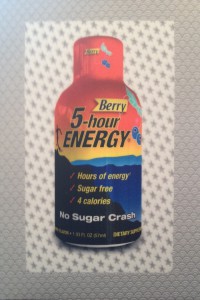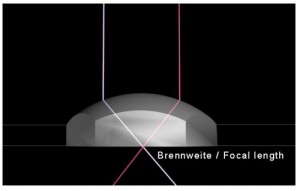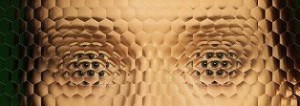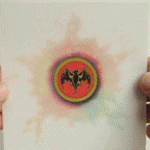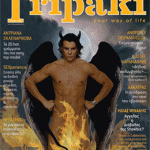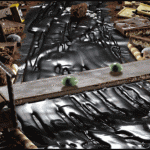MicroLux™ fly’s-eye lens array |
![]()
MicroLux™ is a visually stunning new fly’s-eye lens array technology. The product is a 381 microns 100% recyclable crystal clear amorphous polyester (APET) or 100% recyclable clear polypropylene (PP) sheet containing an array of spherical lenses, borrowing from natures perfect packing honeycomb design.
This unique design results in a 99.9% fill factor, previously unachievable in any optical lens graphic arts material. You will read interesting information about MicroLux™ on this page.
The MicroLux™ sheet allows any plastic printer to print standard graphics and 3D patterns on the reverse side of the sheet, where the lenses magnify the 3D patterns to create outstanding depth, motion, and color-shifting effects.
MicroLux™ APET is more stable on press and can also be used to create dramatic 3D “integral” imagery. MicroLux™ integral images are ideal for CR-80 cards, trading and game cards and other handheld applications.

| Lens design | MicroLux™ |
| Pitch |
Pitch count of 133 lenses per linear inch, hexagonally packed lenses. |
| Thickness / Gauge | 381µ |
| Stock sheet size | 710 mm X 880 mm (28″ X 34.65″) |
| Quantity | 1100 sheets per skid |
| Gross weight | |
| Gross size | |
| Is MicroLux™ recycleable? | 100% recyclable crystal clear amorphous polyester APET (class 1) |
| Standard stock pallet | four-way entry |
| Surface tension – Dyne Level: | APET = 36 – 40 dynes/cm. sq. |
| Resin | crystal clear amorphous polyester APET |
![]()

This site is providing information about MicroLux™ a unique promotion tool test
![]()
 |
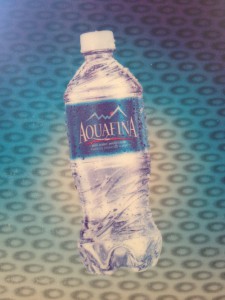 |
How can MicroLux™ be used?
See here some possible MicroLux™ Markets:
– Advertising (POP, Tent Cards, Hang Tabs, Floor Graphics, Direct Mail)
– Cards (Financial, Security, Loyalty, Gaming)
– Packaging (Luxury, Brand, Sporting Goods)
– Anti-Counterfeit/ Security Markets
– Advertising Specialties, Promotional Items
– Scholastic (Books, Pencil Cases, Rulers, Folders, Agenda and Notebook Covers)
– Thermoforming (Containers, Trays, Clam-Shells, etc,)
– In-Mold Decorating (Cups, Containers)
![]()
What is a fly’s eye sheet? A fly’s eye lens is called a fly’s eye because it is how a fly sees his environment. It is a sheet of plastic embossed with a lens array on the surface. The lens array is not a linear lens array like a lenticular, but round lenses nested together in a honeycomb. We use a honeycomb because it is nature’s most efficient way of packing spheres together.
![]()
Is this new? Yes and no. Scientists have studied this as far back as the 1800s, producing prototypes using glass rods, with curved surfaces on one end to understand how the fly’s eyes work. Lippmann was the first to invent “Integral Photography” in 1908 using an array of lenses, but he did not use a true hexagonal lens array, but instead an array of individual lenses. See this page for more information about the history of lenticular and 3D Integral autostereoscopic methods. The first true hex arrays (as a single sheet of material) appeared in the late 40s to early 50s. They were primarily made from glass. The most common method of making them back then was to create a mold using thousands of ball bearings, packed together in a hexagonal array. Plastic hex arrays became available on a very limited basis in the ’70s. They were small arrays, and primarily injection molded, or compression molded.
Some fly’s eye lens arrays were produced using UV clear resin, printed as droplets onto a plastic sheet to create the lens array.
Then more recently, plastic sheet extruders began to emboss fly’s eye lens arrays into their sheeting and sell these products.

FlyeEye lens
![]()
What does MicroLux™ bring compared to other flies’ eye sheets? MicroLux™ is a true hexagonal packing of spherical lenses, allowing for a 99.9% fill factor. This means that there is essentially no space on our sheet that is not curved lens surface. Printed lens arrays and competitive embossed products I have seen have significant space between lenses or are square packed arrays, meaning there is a small diamond-shaped area between every 4 lenses that are not effectively magnifying, and thus the 3D effects are not as brilliant.
Forward Optics developed a unique proprietary engraving process and design to perfectly nest the lenses in the hexagonal arrangement, where the lenses meet each other perfectly to achieve this fill factor.
![]()
How is MicroLux™ produced? It is an extrusion process, where the cylinder engraved with the negative hexagonal lens pattern is pressed into the molten plastic, embossing the lens array into the plastic material, and then the edges are trimmed off and it is cut to the desired length. Just like the usual lenticular sheets!
![]()
Is there an advantage to using MicroLux™ compared to a “printed lens”?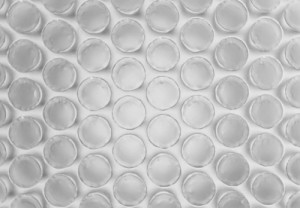
Again, the answer is yes and no. Forward Optics produces using both methods, depending on the customer and application. MicroLux™ has the advantage of the 99.9% fill factor, meaning there is no dead space and the resulting 3D has the optimum contrast, whereas the printed lenses have some space between them, which reduces the contrast.
On the other hand, printed lenses have the advantage of being applied selectively, meaning you can have lenses where you want and not have lenses where you want. With the embossed lenses, the lenses are across the entire surface of the sheet.
![]()
Why would printers use MicroLux™? MicroLux™ offers two primary benefits; first, it is very easy to print, registration is very forgiving, and if the proper checks are made during the design and plating process, it yields a good product immediately, and second, MicroLux™ offers any plastic printer the ability to print 3D effects without a long learning curve and even without software.
![]()
Why would advertisers use MicroLux™? MicroLux™ offers a wow factor, drawing the attention of consumers, who are compelled to stare at the 3D effects and are amazed at the depth they see. Also, because it is generally easier to create and print, it is generally not expensive to produce.
![]()
Is MicroLux™ recyclable? It is pure APET or PolyPropylene, meeting those recyclable designations.
![]()
Did you send sample sheets for lab tests? We have significant lab data showing compliance with every regulation in Europe.
![]()
Why did DP Lenticular decide to add MicroLux™ to its product list?
We are always interested in new products and new technologies.
We don’t consider the fly’s eye effect as a new product but MicroLux™ brings a higher quality with a 99.9% fill factor. We also believe that you can print similar effects on a usual lenticular sheet but our goal is to concentrate on a new opportunity: printing volume 3D Integral images. This means real 3D images that you can see moving the card in all directions (360°). This is something new in the 3D printing business.
![]()
Where can I get more information about MicroLux™?
See the websites below or by Email.
![]()
Where can I buy MicroLux™ sheets?
![]()




